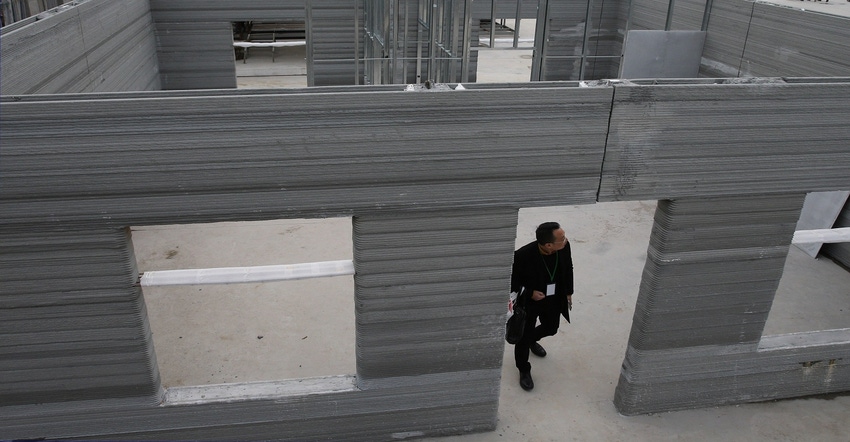Is 3D Printed Housing Ready to Go Primetime?
3D printed construction has been around for years – mostly used in experimental or novelty projects. That’s changing.
February 10, 2022

Wide-scale 3D printed housing may be the next big move forward for additive manufacturing. Given the shortage of housing in the US and the cost savings possible with 3D printed construction, the technology looks attractive. While the prospects sound good for this budding technology, there is a likely wave of regulations coming that could SNAFU things.
Getting 3D construction off the ground is also a challenge. While the cost per house for 3D printing is low compared with traditional construction, the upfront investment is considerable with printers typically running more than a million dollars.
Different Types of 3D Printed Construction
Several construction technologies use additive as the core method to fabricate buildings or construction components. Alternative terms are also in use, such as additive construction, including autonomous robotic construction systems, large-scale additive manufacturing, and freeform construction.
There are also sub-groups, such as 3D concrete that are used to refer to concrete extrusion technologies. There are several 3D printing methods used for construction. The main ones are extrusion (concrete/cement, wax, foam, polymers), powder bonding (polymer bond, reactive bond, sintering), and additive welding.
3D printing for construction scale is showing up in the commercial, industrial, and public sectors. Potential advantages of these automation technologies include faster construction, lower costs, ease of construction, and less waste production.
Several different approaches have been demonstrated, including on-site and off-site fabrication of buildings and construction components. These approaches may use industrial robots, gantry systems, and tethered autonomous vehicles. Demonstrations of construction 3D printing technologies to date have included fabrication of housing, construction components (cladding and structural panels and columns), bridges and civil infrastructure, artificial reefs, follies, and sculptures.
While it’s still a long road before 3D printed construction dominates housing developments, the technology is on the road to maturity.
About the Author(s)
You May Also Like





